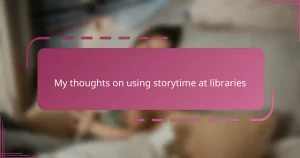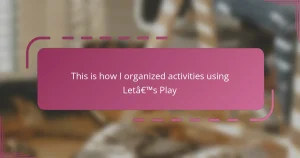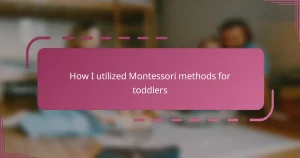Key takeaways
- Positive discipline focuses on teaching and nurturing through connection, rather than using punishment, fostering cooperation and understanding in children.
- Key principles include being kind yet firm, promoting mutual respect, and emphasizing solutions over punishment, which leads to a calmer and more respectful home atmosphere.
- Maintaining consistency among caregivers and involving children in setting family rules enhances cooperation and trust, making discipline more effective and less stressful.
- Applying positive discipline techniques transforms parental responses from frustration to empathy, enabling better communication and deeper connections with children.
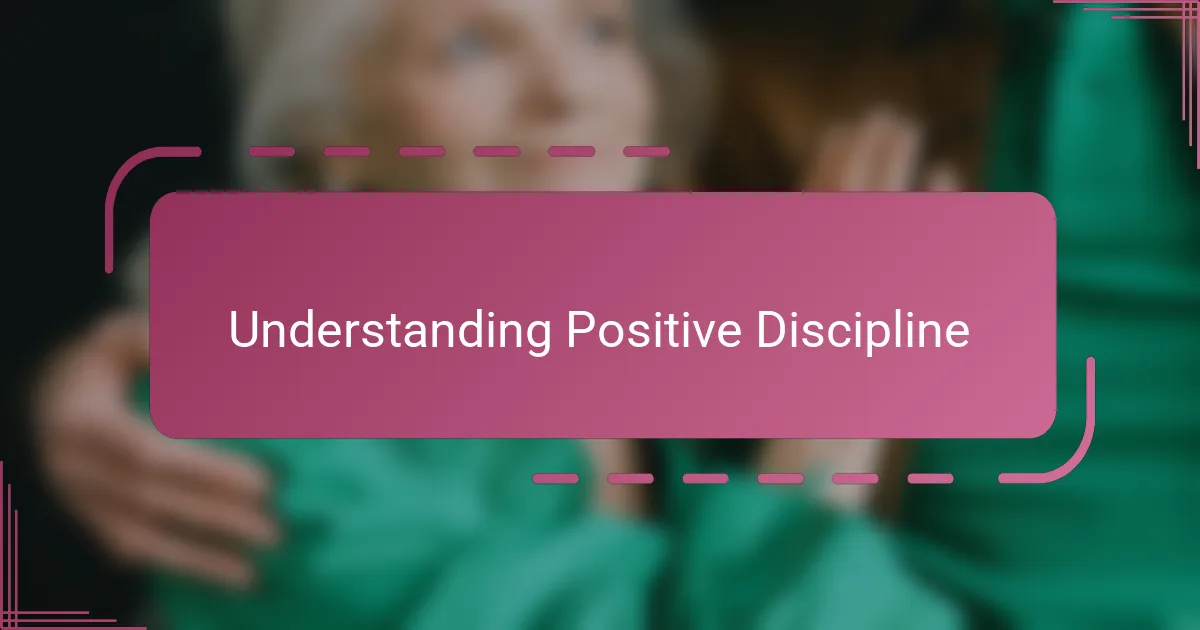
Understanding Positive Discipline
When I first encountered the concept of positive discipline, I wondered if it was really possible to guide my children without using punishment. Positive discipline, as I learned, focuses on teaching and nurturing rather than penalizing. It’s about building a connection that encourages cooperation instead of fear.
This approach made me reflect deeply on my own reactions as a parent. I realized that responding with patience and understanding often calmed situations much faster than harsh words or consequences. Isn’t it more powerful to inspire good behavior by helping kids understand choices rather than just enforcing rules?
What struck me the most is how positive discipline respects children as learners and problem-solvers. It shifts the focus from what went wrong to how to do better next time. I found this mindset change both challenging and rewarding, as it encouraged me to model the behavior I hoped to see.
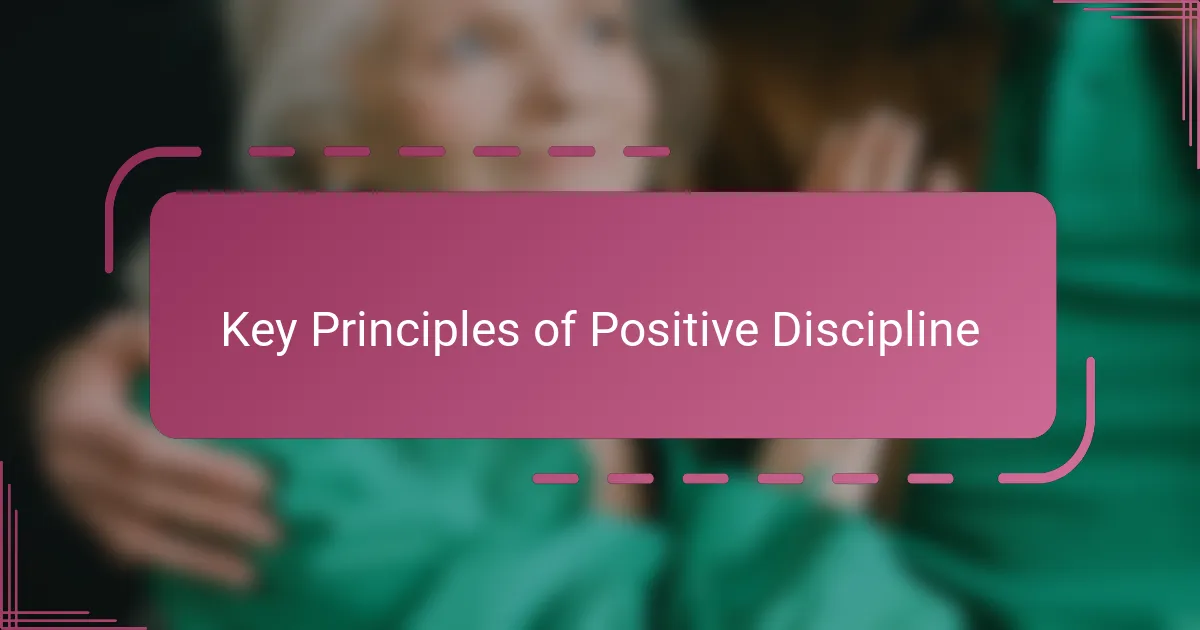
Key Principles of Positive Discipline
One of the key principles I discovered is that discipline should be both kind and firm. At first, balancing these felt tricky—how do you stay gentle but still set clear limits? Over time, I learned that consistency in expectations, paired with empathy, helped my children feel secure and understood without feeling controlled.
Another principle that resonated with me is the emphasis on mutual respect. When I treated my kids as capable individuals deserving of respect, they started responding with respect in return. It made me wonder, why had I ever thought discipline meant just issuing commands? Creating a respectful dialogue transformed our daily interactions.
Finally, positive discipline encourages focusing on solutions rather than punishment. Instead of asking, “What did you do wrong?” I began asking, “How can we fix this together?” This simple shift changed the whole atmosphere in our home. It made mistakes feel like opportunities to learn rather than reasons for shame, which was incredibly freeing for all of us.
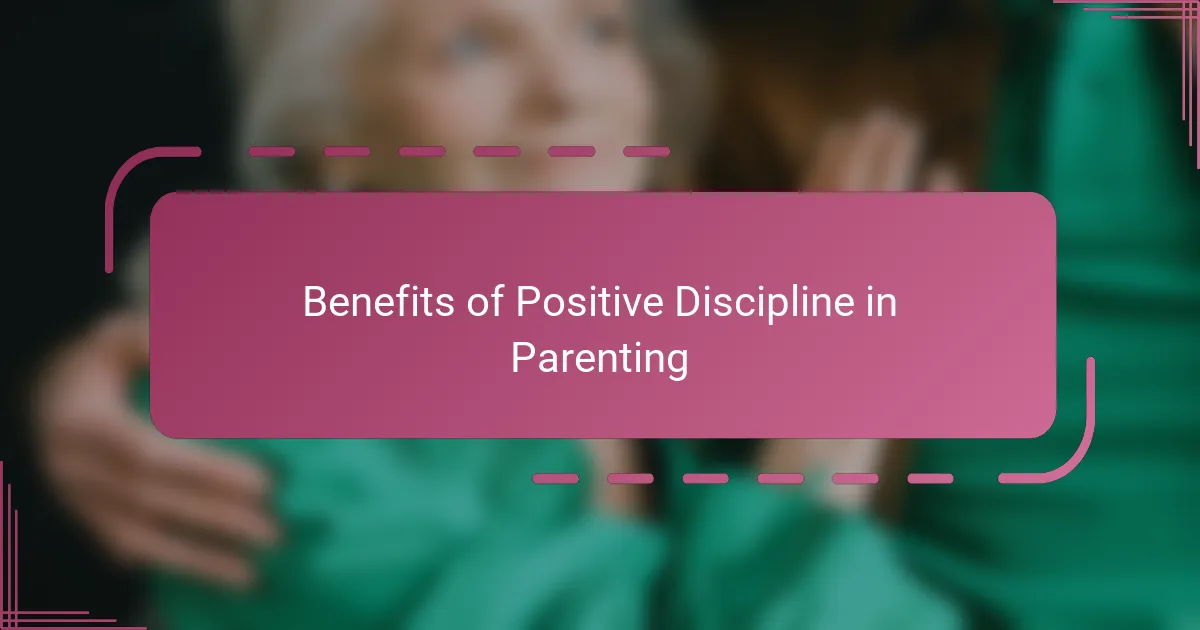
Benefits of Positive Discipline in Parenting
One of the biggest benefits I noticed with positive discipline was how it strengthened the bond between me and my children. Instead of reacting out of frustration, I started listening more and guiding with patience. Have you ever experienced that moment when your child actually feels heard? For me, that shifted everything; cooperation came so much more naturally.
I also appreciated how positive discipline helped my kids develop self-discipline and problem-solving skills. Rather than just following rules blindly, they learned why certain behaviors matter and how their choices impact others. This felt empowering for them and relieved me from constantly feeling like the “bad cop.”
What surprised me most was the overall atmosphere in our home becoming calmer and more joyful. Without threats or punishments hanging over our heads, conflicts became chances to connect and understand each other better. I often wondered why it took me so long to realize that kindness paired with firmness could be so effective.
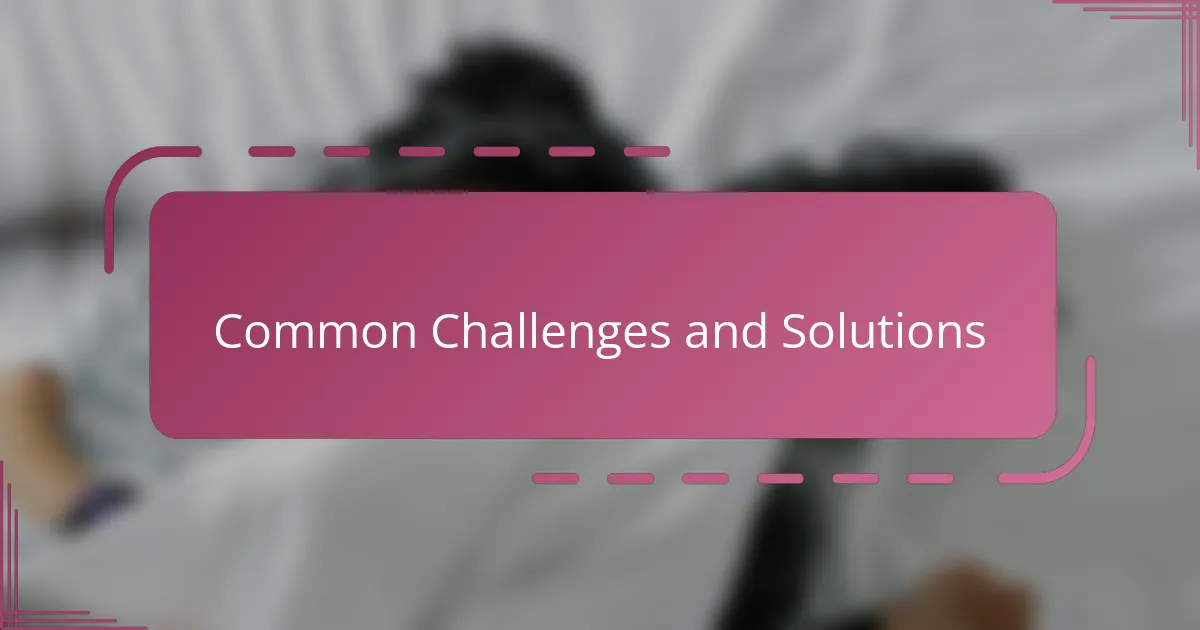
Common Challenges and Solutions
One challenge I faced early on was resisting the urge to revert to old habits of quick punishment when tensions ran high. It wasn’t easy to stay patient in those moments. Have you ever found yourself slipping back into frustration despite your best intentions? I learned that pausing to take a deep breath before responding helped me stay calm and intentional.
Another difficulty was maintaining consistency, especially when multiple caregivers had different approaches. I remember feeling frustrated when my partner and I weren’t on the same page. What finally worked for us was setting aside time for regular conversations about our goals and strategies, so we presented a united front while still being kind.
Sometimes, I worried that being gentle might lead to kids taking advantage of the flexibility. That fear was real at first, but over time I saw that clear boundaries paired with respectful communication actually encouraged more cooperation, not less. Isn’t it surprising how firmness and warmth can coexist to create a peaceful environment?

Applying Techniques in Daily Life
Applying positive discipline techniques in daily life quickly became a balancing act for me. I found that routines, like shared family meetings or bedtime chats, offered natural moments to practice listening and problem-solving together. Have you noticed how these small intentional pauses can shift the entire tone of interactions?
At times, I struggled with consistency, especially on hectic days when impatience crept in. But reminding myself of the long-term goal—to nurture understanding rather than obedience—helped me pause and respond more thoughtfully. It’s remarkable how just a calm tone or a gentle question can redirect a situation without escalating conflict.
What really surprised me was how applying these techniques deepened my children’s trust. When they saw I was genuinely interested in their feelings and ideas, they opened up more often and behaved more responsibly. Doesn’t it feel wonderful to replace power struggles with meaningful conversations that actually bring you closer?
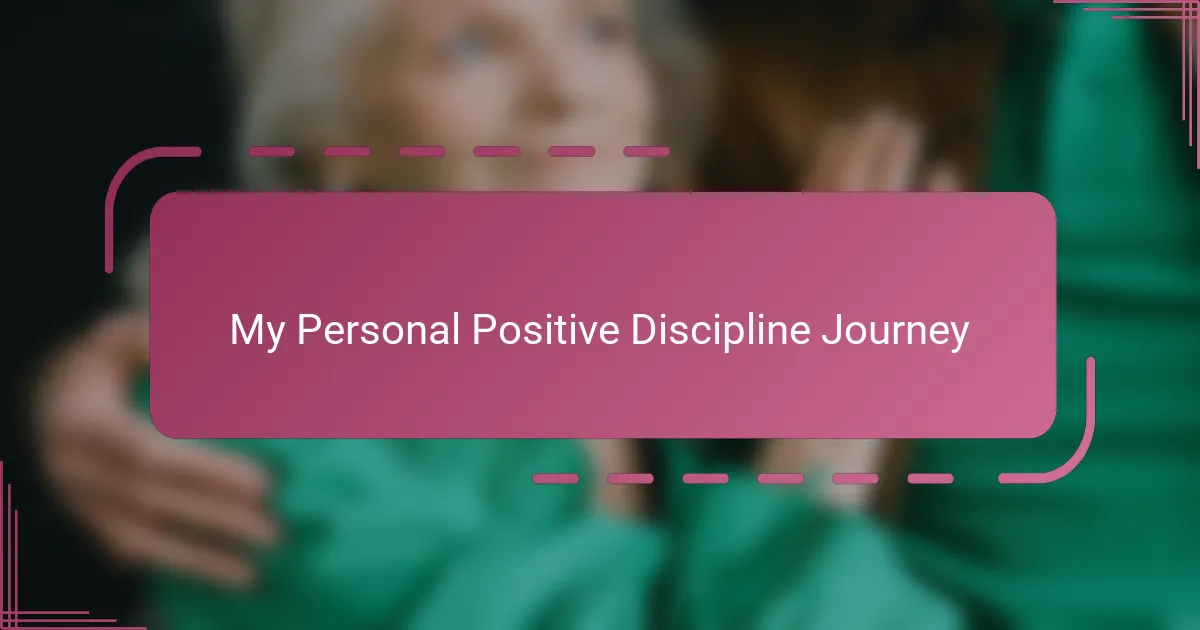
My Personal Positive Discipline Journey
My journey with positive discipline wasn’t a straight path. I remember one afternoon when my child was having a meltdown, and instead of reacting with frustration, I tried to quietly name the feeling they were experiencing. It was awkward at first, but seeing their expression soften made me realize that empathy can truly diffuse tension.
At times, I questioned whether I was being too lenient or too strict. How do you find that sweet spot between giving freedom and setting boundaries? Through trial and error, I discovered that honesty—admitting when I didn’t have all the answers—built more trust than trying to appear perfect ever did.
What still amazes me is how much this approach reshaped our relationship over time. Moments that once felt like battles gradually turned into opportunities for connection and growth. Have you ever noticed how just shifting your mindset can change the whole experience of parenting? For me, embracing positive discipline has been that powerful.
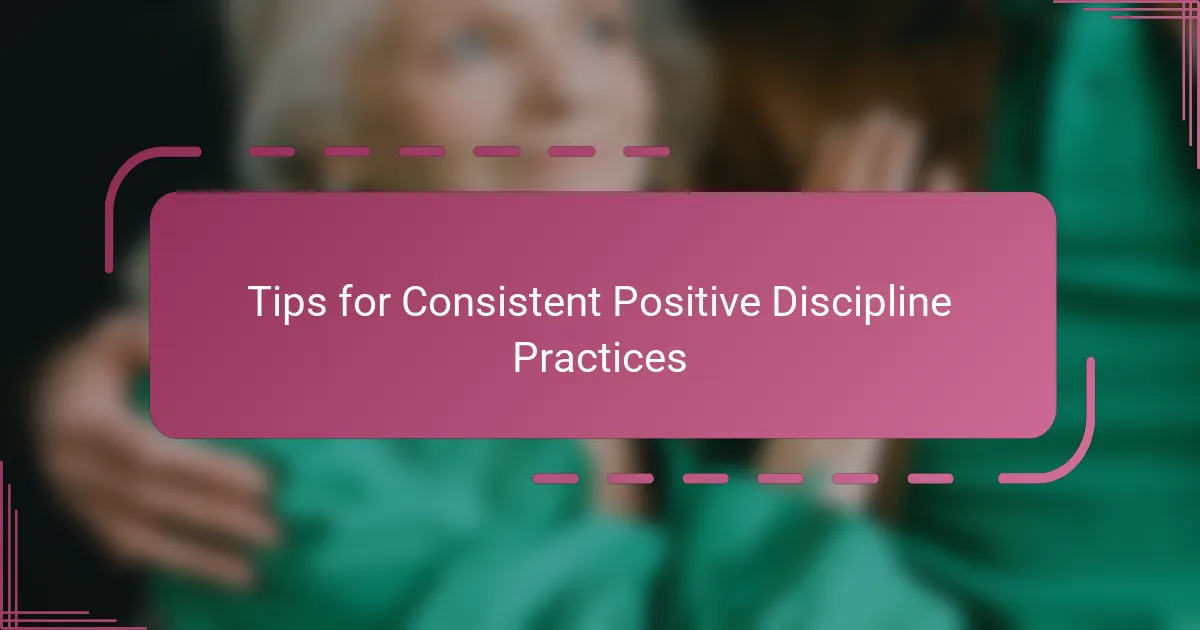
Tips for Consistent Positive Discipline Practices
One tip that truly helped me maintain consistency was creating simple, clear family rules together with my kids. When they had a say in setting the boundaries, it felt less like imposed demands and more like agreed-upon guidelines. Have you ever noticed how children respond better when they feel involved rather than controlled? That made all the difference in our daily routines.
I also realized that consistency doesn’t mean rigidity. Life gets unpredictable, and sometimes patience wears thin. During those moments, I found it crucial to remind myself why positive discipline matters—not perfection, but progress. How often do we, as parents, need those gentle reminders to be compassionate with ourselves?
Finally, keeping open communication between all caregivers was a game-changer. When everyone used language and responses that aligned with positive discipline, the message to our children was clear and steady. Maybe that’s why the home felt calmer; everyone was on the same page, showing kindness and firmness in harmony. Do you think this kind of united approach could work in your family too?
